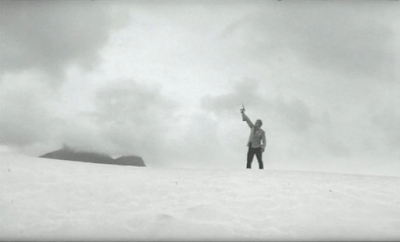Wonders in the Dark is having a poll to determine the best 15 films from China, Hong Kong and Taiwan.
It is tough to narrow down just 15 films from China, Hong Kong and Taiwan especially since they all have a rich history of cinema going back almost a century to the 1920s-early 1930s. On top of that, there are many diverse genre films from this part of the world making it challenging to pit one film style against another. Ultimately, I opted for the following 15 films.
Best Films from China, Hong Kong, Taiwan
1. In the Mood for Love (2000, Hong Kong, Wong Kar-wai)
2. Yi Yi: A One and a Two (2000, Taiwan, Edward Yang)
3. Flowers of Shanghai (1998, Taiwan, Hou Hsiao-Hsien)
4. Platform (2000, China, Jia Zhang-ke)
5. Eat Drink Man Woman (1994, Taiwan, Ang Lee)
6. Election (2005, Hong Kong, Johnnie To)
7. Spring in a Small Town (1948, China, Fei Mu)
8. Raise the Red Lantern (1991, China, Zhang Yimou)
9. West of the Tracks (2002, China, Wang Bing)
10. What Time is It There? (2001, Taiwan, Tsai Ming-liang)
11. Chungking Express (1994, Hong Kong, Wong Kar-wai)
12. Infernal Affairs (2002, Hong Kong, Andrew Lau/Alan Mak)
13. Crouching Tiger, Hidden Dragon (2000, Taiwan/Hong Kong/China, Ang Lee)
14. Devils on the Doorstep (2000, China, Wen Jiang)
15. Ash is Purest White (2018, China, Jia Zhang-ke)
One surprising aspect of this list was finding out that I included 5 films from the Year 2000. That means 1/3 of all the films in this list came from one year. The stellar quality of these 5 films does indicate that 2000 was a strong year for Hong Kong, Taiwan and China.
In the Mood for Love (2000, Hong Kong, Wong Kar-wai)
Yi Yi: A One and a Two (2000, Taiwan, Edward Yang)
Platform (2000, China, Jia Zhang-ke)
Crouching Tiger, Hidden Dragon (2000, Taiwan/Hong Kong/China, Ang Lee)
Devils on the Doorstep (2000, China, Wen Jiang)
In the Mood for Love is one of Wong Kar-wai’s most iconic films. Yi Yi is considered one of Edward Yang’s best films while Jia Zhang-ke’s second feature, Platform, helped propel his name globally. Ang Lee’s Crouching Tiger, Hidden Dragon certainly established a new found love for wuxia in the West. Wen Jiang’s powerful 2nd feature Devils on the Doorstep got plenty of attention after it won the Grand Jury prize at Cannes 2000.
[Updated List, May 11, 2022]
Best Films from China, Hong Kong, Taiwan
1. In the Mood for Love (2000, Hong Kong, Wong Kar-wai)
2. Yi Yi: A One and a Two (2000, Taiwan, Edward Yang)
3. Flowers of Shanghai (1998, Taiwan, Hou Hsiao-Hsien)
4. Platform (2000, China, Jia Zhang-ke)
5. Boat People (1982, Hong Kong, Ann Hui)
6. Eat Drink Man Woman (1994, Taiwan, Ang Lee)
7. Election (2005, Hong Kong, Johnnie To)
8. Raise the Red Lantern (1991, China, Zhang Yimou)
9. West of the Tracks (2002, China, Wang Bing)
10. What Time is It There? (2001, Taiwan, Tsai Ming-liang)
11. Chungking Express (1994, Hong Kong, Wong Kar-wai)
12. Infernal Affairs (2002, Hong Kong, Andrew Lau/Alan Mak)
13. Crouching Tiger, Hidden Dragon (2000, Taiwan/Hong Kong/China, Ang Lee)
14. Devils on the Doorstep (2000, China, Wen Jiang)
15. Ash is Purest White (2018, China, Jia Zhang-ke)
16. Spring in a Small Town (1948, China, Fei Mu)


















